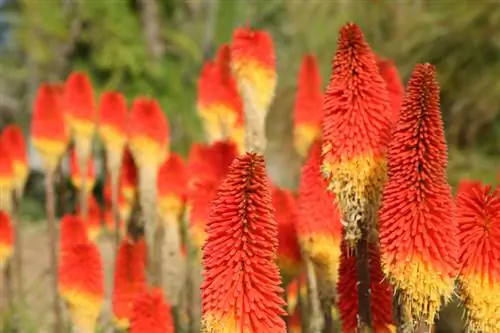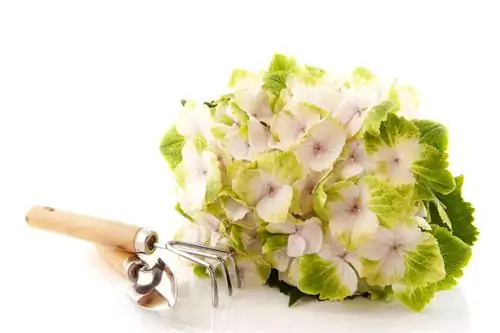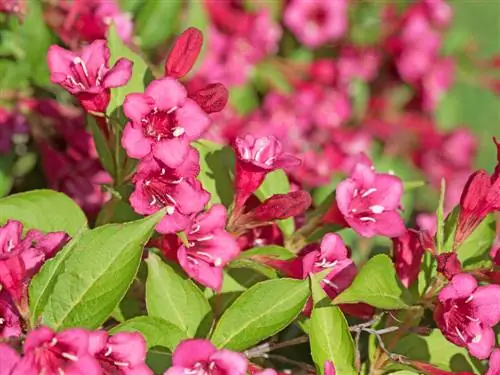- Author admin [email protected].
- Public 2023-12-16 16:46.
- Last modified 2025-01-23 11:20.
With their strong colors, the decorative torch lilies provide colorful eye-catchers in every flower bed. The care is not very complicated. Outdoor plants only need special winter protection during the cold season.

How do you properly care for a torch lily?
Caring for the torch lily is easy: only water it when it is dry for a long time, fertilize sparingly with compost and horn shavings, cut off spent flowers and old leaves, provide winter protection and make sure it is well-drained and not too moist Location.
How often does the torch lily need to be watered?
Torch lilies tolerate short dry periods quite well. You only need to water if it hasn't rained for a long time. Torch lilies in pots need water more often. Under no circumstances should the perennial be too moist.
Water from below only in the morning or evening so that the leaves do not burn in the sun.
Does the torch lily need additional fertilizer?
Torch lilies are undemanding. Too much fertilizer harms them. Amend the soil with mature compost before planting.
Each spring you can spread compost around the plants. A little horn shavings (€52.00 on Amazon) in the fall won't do any harm either, as long as you don't overdo it.
Does the plant need to be cut?
The torch lily can only tolerate pruning in spring if you remove the old leaves. During the gardening season, you should cut spent flowers to prevent the plant from producing seeds. This would weaken it unnecessarily and produce fewer flowers.
Can the torch lily be transplanted?
Basically, you can also transplant the perennial. The best time for planting and transplanting is spring. When planted in the fall, the torch lily does not have enough time to grow properly. She then freezes quickly.
How do you get the plant through the winter?
Most varieties are not hardy at all or only partially hardy. Make sure you have a protected place when choosing a location. Tie the leaves together at the top in fall. This will protect the heart of the plant from too much moisture. Additionally cover the torch lily with some leaves.
What pests and diseases affect torch lilies?
- Snails
- Earworms
- Thrips
- Root rot
You should collect snails. Diseases rarely occur in a favorable location that is not too humid.
Tips & Tricks
Only very few varieties of torch lily survive sub-zero temperatures. If you are unsure, plant your torch lily in a container. Then you can overwinter them indoors.






